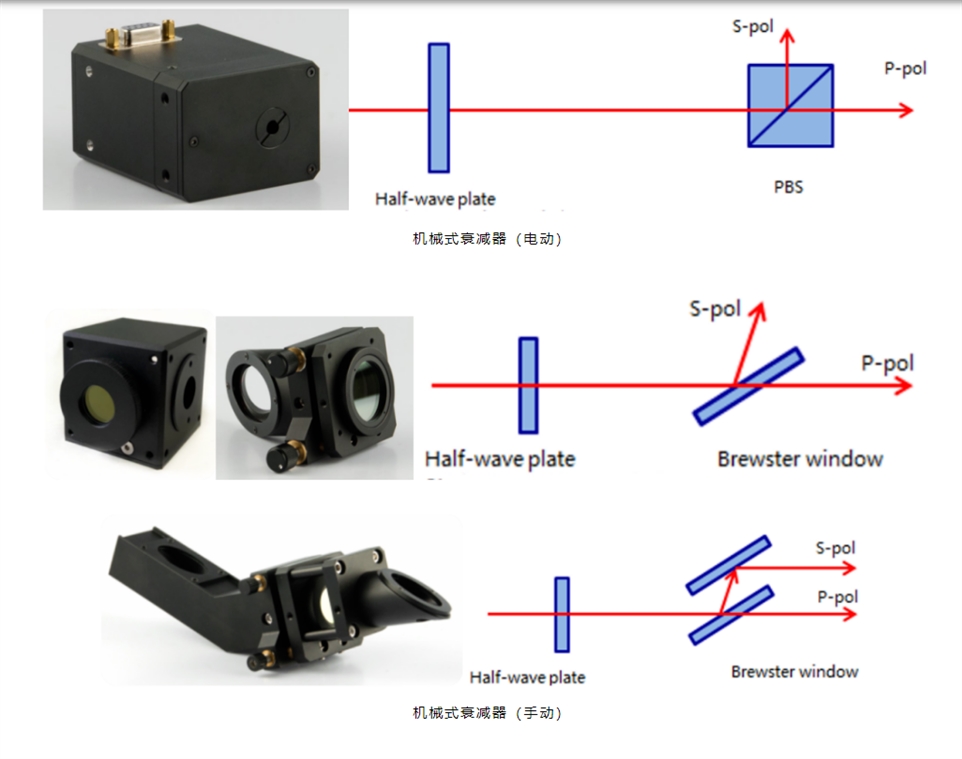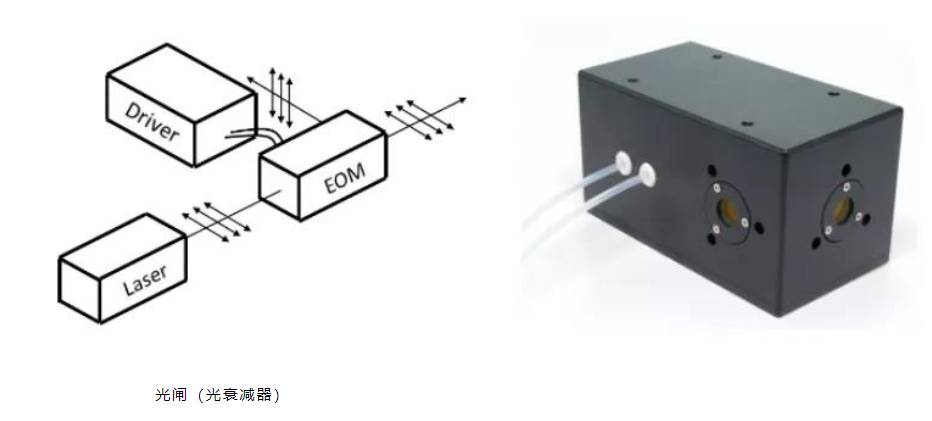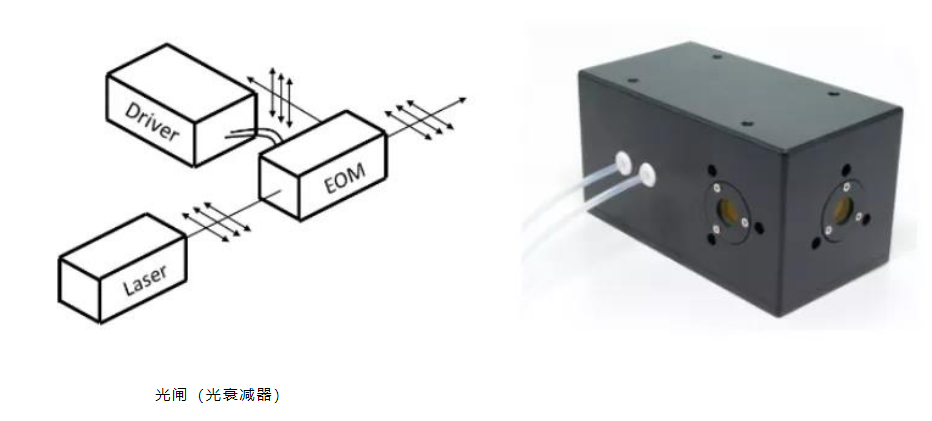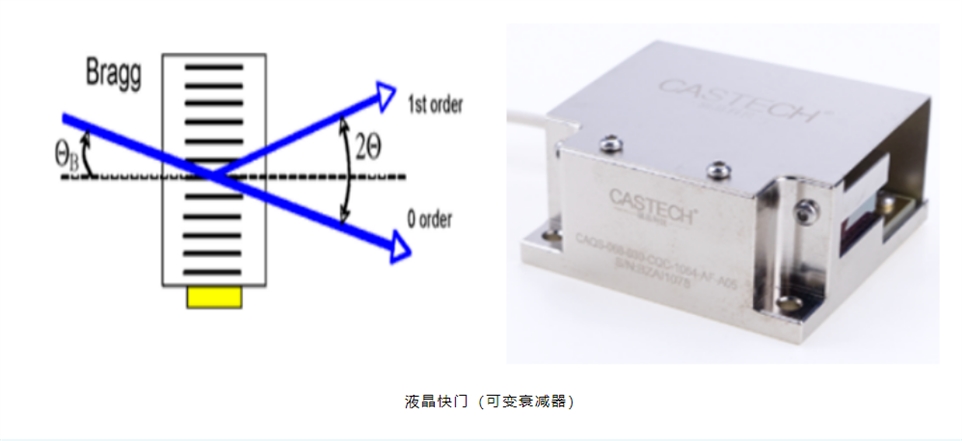


The electro-optical intensity modulator can change the intensity or amplitude of polarized light. The principle is based on the Pockels effect of the electro-optical crystal. After the polarized light beam passes through the electro-optic crystal applied with the electric field, the polarization state is changed and selectively split by the analyzer. The intensity of the emitted light can be controlled by changing the electric field intensity, and the rising/falling edge of the order of ns can be achieved. Relying on its years of advantages in the field of electro-optic crystals, Fortune Technology has launched a series of electro-optic intensity modulators such as high-speed shutters, providing customers with mature and customizable solutions.

The acousto-optic modulator can also be used as an intensity modulator. Changing the diffraction efficiency can control the power of the 0th order light and the 1st order light to achieve the purpose of adjusting the light intensity. Acousto-optic golden gate (optical attenuator) has the characteristics of fast modulation speed and high damage threshold. Fortune Technology can provide acousto-optic intensity modulators with damage thresholds exceeding 1GW/cm2 and low scattering. It can provide customers with the best solution design according to the modulation speed, wavelength, beam diameter, extinction ratio, and other indicators required by the customer.

Liquid crystal devices are often used as variable wave plates or tunable filters. Adding specific polarizing elements to the two ends of the liquid crystal cell to which the driving voltage is applied can be made into a liquid crystal shutter or variable attenuator. The product has a clear aperture—features such as large and high reliability.
